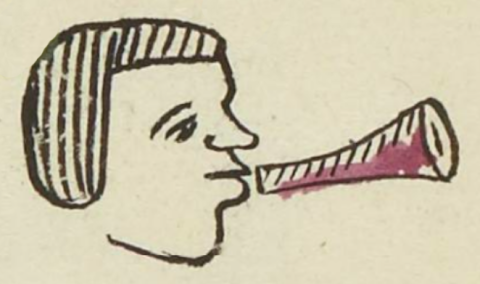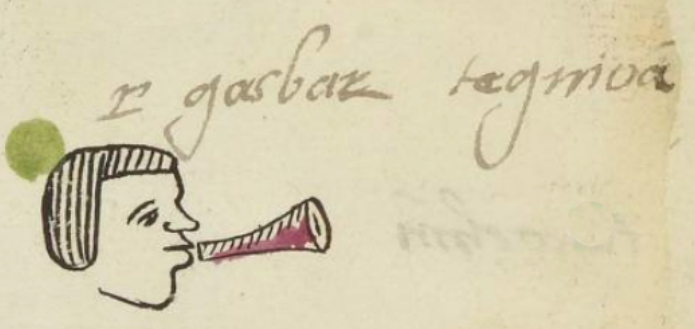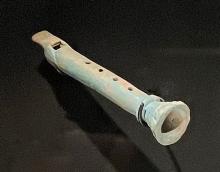Tequihuan (MH519r)
This glyph for the personal name and/or title Tequihuan (used for war captains) shows a man's head with what appears to be a horn near his mouth. It has texturing that gives it a three-dimensionality, and it is painted red on the lower half. The man and the horn are facing to the right.
Stephanie Wood
The presence of the horn suggests that the man uses it perhaps as a part of his role as a war captain. The type of horn is not clear; perhaps it could be a European introduction.
The person who bears the name or title Tequihuan has a Christian name, too, as he has been baptized. The final "n" on Tequihuan could be intrusive, in which case the name or title should be the more expected Tequihua.
Stephanie Wood
gasbar teguioā
Gaspar Tequihuan
Stephanie Wood
1560
Josè Aguayo-Barragán
captains, capitanes, war, guerra, horns, trompetas, música, nombres de hombres
This greenstone tlapitzalli (flute) resembles (except in terms of its color) the apparent wind instrument being played by the war captain. Photo by Robert Haskett, Museo del Templo Mayor, 15 February 2023; this commentary also by RH.

tequihua, war captain, https://nahuatl.wired-humanities.org/content/tequihua
El Capitán
Matrícula de Huexotzinco, folio 519r, World Digital Library. https://www.loc.gov/resource/gdcwdl.wdl_15282/?sp=117&st=image
This manuscript is hosted by the Library of Congress and the World Digital Library; used here with the Creative Commons, “Attribution-NonCommercial-ShareAlike 3.0 License” (CC-BY-NC-SAq 3.0).



